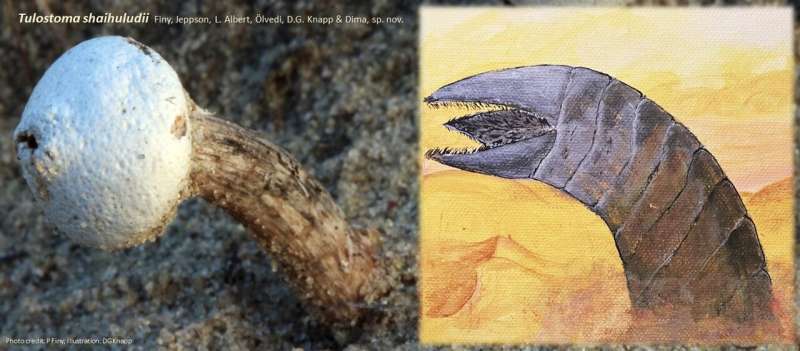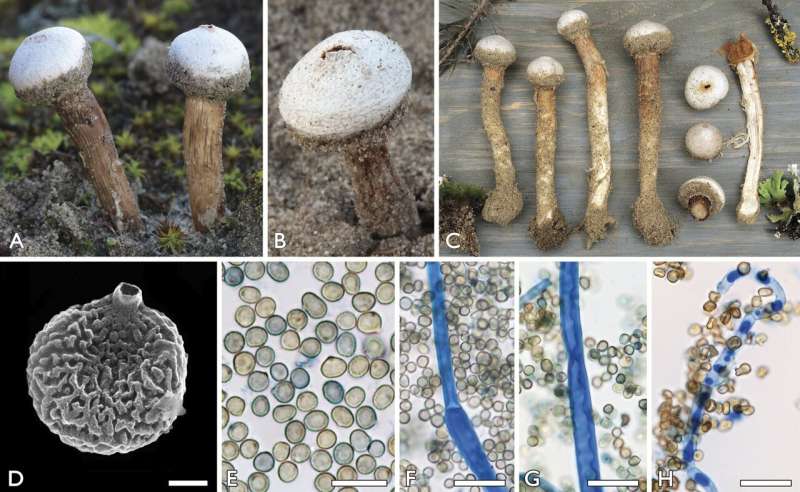This article has been reviewed according to Science X's editorial process and policies. Editors have highlighted the following attributes while ensuring the content's credibility:
fact-checked
trusted source
proofread
Fungus from Arrakis: New species named after Dune's giant worms

A new species of stalked puffball, a gasteroid fungus, has been named after the "Shai-Hulud" sandworms of Frank Herbert's iconic science fiction novel series "Dune."
Discovered in Hungary, the new species, Tulostoma shaihuludii, is one of four new species in the genus Tulostoma that were discovered and published in the journal MycoKeys. The other species are Tulostoma dunense, Tulostoma hungaricum, and Tulostoma sacchariolens.
Researchers chose the name due to the worm-like appearance of the species' fruiting body, coupled with the sandy habitat of the Pannonian Steppe, where it was discovered.
The team consisted of Péter Finy (Eötvös Loránd University, Hungary), Mikael Jeppson (University of Gothenburg, Sweden), Dániel G. Knapp (Linnaeus University, Sweden), Viktor Papp (Hungarian University of Agriculture and Life Sciences, Hungary), László Albert (Hungarian Mycological Society, Hungary), István Ölvedi (Hungarian Mycological Society, Hungary), Károly Bóka (Eötvös Loránd University, Hungary), Dóra Varga (Eötvös Loránd University, Hungary), Gábor M. Kovács (Eötvös Loránd University, Hungary), and Bálint Dima (Eötvös Loránd University, Hungary).

These discoveries have been particularly significant due to Hungary's steppe vegetation on sandy soil being identified as a hotspot for the stalked puffballs in Europe. The research team conducted a comprehensive taxonomic revision of gasteroid fungi in Hungary, contributing to the understanding of this group's diversity.
The discovery of Tulostoma shaihuludii demonstrates the intricate connections between species and their habitats. It also highlights the importance of geographic isolation in the emergence of new species, as seen in the case of Tulostoma dunense, which is closely related to North American species but distinctly different, as revealed by genetic analysis.
More information: Péter Finy et al, Exploring diversity within the genus Tulostoma (Basidiomycota, Agaricales) in the Pannonian sandy steppe: four fascinating novel species from Hungary, MycoKeys (2023). DOI: 10.3897/mycokeys.100.112458
Provided by Pensoft Publishers


















